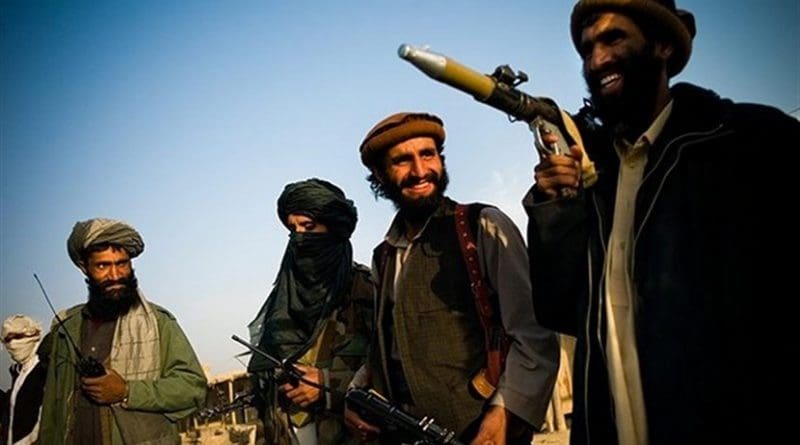Asymmetry In Resolve: Why The US Could Not Defeat Taliban In Afghanistan – OpEd
“You will kill 10 of our men, and we will kill 1 of yours, and in the end, it will be you who tire of it”. Ho Chi Minh (famous guerrilla leader in Vietnam) said this when the French tried to reiterate their control over Vietnam. Apparently, it looks like just a normal statement from a guerrilla leader, but it is a perspective through which we can analyze the outcome of the war that exists in the contemporary world. I will explain here, “how”.
In the present scenario, the term asymmetric warfare is widely debated among scholarship of International relations. In simple terms, asymmetric warfare refers to those conflicts in which there is a huge difference in fighting power of the belligerent parties. This asymmetry is mostly referred to as power in tangible form. Simply it tries to compare the total number of troops, weaponry and other warfighting total tools between two hostile parties.
For example, it is widely believed that there is power asymmetry between India and Pakistan because the Indian defense budget is $58 billion while Pakistan spends only just over $10 billion in the defense sector annually. Disparity is also present in the number of troops and military equipment. The same stance is maintained when the United States overrun Iraq in 2003 because there was power asymmetry between the United States and Iraq.
But the story is not as simple as it looks. We have some other aspects of asymmetry in which comparison is necessary, with careful attention, if we want to assess the actual ground situation in any kind of asymmetrical conflict. In contemporary world guerrilla warfare, though it is different from conventional wars, also falls in the category of asymmetric war. We can simply define guerrilla warfare as “the use of hit-and-run tactics by small, mobile groups of irregular forces operating in territory controlled by a hostile, regular force.” But why these guerrilla forces attack their opponent and then go into a hidden place. It is because of asymmetry. Asymmetry in military force, guerrilla fighters do not have enough force to face their enemies eyeball to eyeball.
In the same way, when the United States invaded Afghanistan, the Taliban government there melted like snow. Taliban fighters left Kabul, but found their safe haven in ragged mountains in different regions of Afghanistan. Initially, the United States was very optimistic about victory in Afghanistan. But it was a protracted war in which the Taliban lost thousands of their fighters, but they were not willing to surrender. Total causalities of the US Troops in this long protracted war are more than 2,300, let alone $760 billion that the US has spent in these long 18 years. But if we analyze the current situation of Afghanistan, we will see that Afghan Taliban are a very strong force. The US backed Afghan government directly or indirectly controls only 56.8% of districts in Afghanistan. It must be remembered that the US forces are still in Afghanistan and US supplies to help Afghan government are still in full flow.
When President Trump came into power he promised to withdraw US forces from Afghanistan in possible minimum time. Zalmay Khalilzad was appointed as special envoy for Afghan peace talks. Many rounds were held but when opposing parties were about to clinch the settlement, President Trump called off the talks with a tweet. (Though these talks are resumed again).
So how can we analyze with a new perspective, the Afghan war, that started in 2001 and still there is no end in sight. When the United States invaded Afghanistan it was soul superpower of the world while the Taliban regime lacked basic civilian as well as military infrastructure. But despite this huge disparity the Taliban still maintains themselves as viable military force. Therefore the thing that benefited Taliban fighters is their “resolve” to fight a bloody protracted war. (Resolve can be simply defined as the willingness of an actor to endure costs in order to acquire some good”). Therefore the outcome of war is dependent not only on military capabilities, but the willingness and resolve to bear the losses of war.
Now I came to the Ho Chee Minh’s statement, which I wrote at the very beginning that “it will be you (conventional powerful military force) who will be exhausted.” In my opinion, the United States is exhausted in this long bloody war. The outcome of this war is determined not by superior military force, but by the resolve of belligerent parties. I do not say that the United States has lost this war ,but Hennery Kissinger, US former national security advisory and a genius in the field of diplomacy and international relations once said that:
“The conventional army loses if it does not win. The guerrilla wins if he does not lose.”
Now it is up to the reader to conclude who has won in this bloody war of Afghanistan.
*Muhammad Rizwan is research scholar of MS International Relations at COMSATS University Islamabad. He can be reached at [email protected]

